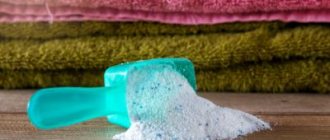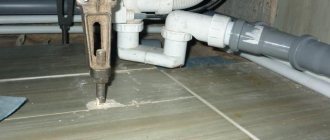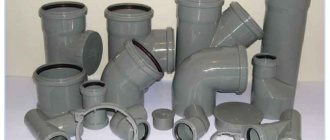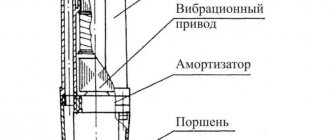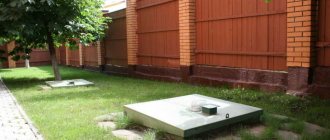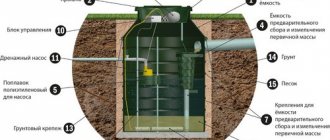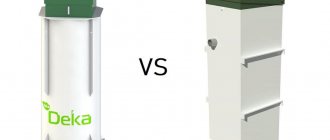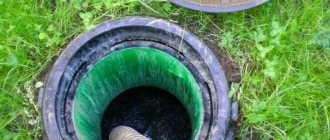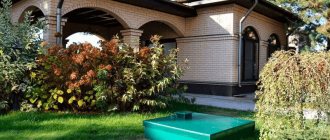Almost everyone knows what a septic tank is and what it is used for. This is a treatment facility that provides additional comfort for private homes and cottages. However, not everyone is familiar with some of the nuances and operating rules of these devices. For example, it is prohibited to throw a certain number of things into the installation, which includes ordinary toilet paper.
In this article, we will figure out whether it is possible to throw toilet paper into a septic tank and what kind. Previously, when most local sewage treatment plants operated on the principle of mechanical cleaning, everyone knew that throwing paper into the toilet was strictly not recommended. With the advent of modern and high-tech septic tanks on the market, there is no such prohibition.
Types of treatment facilities
Cleaning of organic waste occurs under the influence of special bacteria that artificially colonize inside the device.
In structurally simple and economical structures without an aeration function, waste decomposition is carried out by anaerobic bacteria in an oxygen-free environment.
Such devices require installation of ventilation to ensure gas removal and normal evaporation of liquid.
In septic tanks with aeration with two or more chambers, there are two types of microorganisms - anaerobic and aerobic. The former process the bulk of waste in an oxygen-free chamber. Then the second stage of waste treatment (clarification) by aerobic microorganisms is carried out, after which the contents of the waste do not pose a danger to human health and the environment.
Soluble paper Thetford Aqua Soft
This American company has been producing portable toilets since the sixties, which is why it has become famous. She then developed a line of products needed for composting toilets, including AQUA SOFT paper.
Attention! Aqua Soft paper quickly disintegrates into small particles in water, forming a fluid mass that easily breaks down together with wastewater. The paper meets all environmental and hygienic standards
The paper meets all environmental and hygienic standards.
A standard package of Aqua Soft paper contains 4 rolls. One package costs about four hundred rubles. The paper is sold in specialty stores, or it can be ordered online.
Advantages of Aqua SOFT paper
This brand of paper has special advantages. These include the following qualities:
1.it can be used for any type of dry closet, in any autonomous sewers with septic tanks.
2. It dissolves instantly, so it does not form congestion.
3.quickly breaks down with feces and other wastes.
4.The paper is harmless to people.
What problems may arise
Mostly, malfunctions occur due to improper use and errors during installation of the sewerage system. Main problems:
- Clogged pipelines and strainers.
Occur as a result of washing away large debris that does not dissolve in water (mechanical blockages). Other reasons are an insufficiently wide diameter of the pipe (less than 150 mm), the appearance of hard deposits (fat plugs) on its walls, and an excessively large angle of inclination that interferes with the normal flow of water. - Difficulties during pumping. They occur when large, water-insoluble waste is washed away. The contents thicken, acquire a heterogeneous consistency, and become difficult to remove. Call us and we will promptly remove the blockage and pump out the septic tank using special equipment.
When disinfectants, drugs and other substances that are lethal to bacteria enter the treatment chambers, the death of most of the population often occurs. In this case, the quality of cleaning decreases noticeably, an unpleasant odor appears in the bathroom and area, and contamination of the soil and groundwater occurs with organic waste.
If the bacteria are dead, you can buy them at a specialty store and re-add them to the septic tank. To prevent this from happening, do not use chlorine-containing household chemicals and disinfectants.
Accessories and products for Thetford composting toilets
Please note that AGRO-TRADING is the official dealer of the equipment it sells!
Special, easily soluble and soft toilet paper for all types of dry closets. Decomposes along with waste. Does not clog drains and sewer systems.
Bathroom Cleaner. Designed for cleaning all types of plastic. It has an antistatic, disinfectant and bleaching effect. Volume – 0.5 l.
Toilet paper for composting toilets (soluble) Aqua Soft (4 rolls). Ultra-soft toilet paper. Prevents the possibility of clogging!
Volume – 1 l. Manufacturer – Netherlands.
Liquid for dry toilet “Aqua Kem Blue”. Designed for use in the receiving tanks of portable dry closets. Used for complete breakdown of waste, destruction of microbes and elimination of odors in the lower tank of the dry closet. It has a powerful deodorizing effect, prevents the accumulation of gases, promotes the dissolution of solid waste, thereby facilitating the draining of the contents, and maintains the cleanliness of the tank.
If you use a composting toilet at your summer cottage, but use it only on weekends, then Aqua Kem Weekender sanitary liquid, 2 l, has been specially developed for you. It is designed to break down fecal matter in the shortest possible time, which means it has excellent quality.
Liquid for dry toilet Cassette Tank Cleaner with a pleasant fresh smell has a powerful cleaning and deodorizing effect, helps dissolve lime deposits on the internal walls and moving parts of the receiving tank. Eliminates unpleasant odors.
Liquid for dry toilet “Aqua Kem Rinse”. A unique water additive in the cistern that provides more efficient flushing. Prevents the appearance of dark spots on the toilet when using hard water.
An effective powder for recycling waste in dry closets. Designed for the bottom tank of portable toilets. Has a biological effect - environmentally friendly! We pour one package into the lower tank (21 liters) and add 2 liters of water.
Volume – 2 l. Manufacturer – Netherlands.
Liquid for dry toilet “Aqua Kem Green”. Biological toilet liquid for use in the receiving tanks of portable dry toilets. It has a powerful deodorizing effect, prevents the accumulation of gases, promotes the dissolution of solid waste, thereby facilitating the draining of the contents, and maintains the cleanliness of the tank. Bottle volume 1.5 l.
Liquid for dry toilet “Aqua Kem Blue”. Designed for use in the receiving tanks of portable dry closets. Used for complete breakdown of waste, destruction of microbes and elimination of odors in the lower tank of the dry closet. It has a powerful deodorizing effect, prevents the accumulation of gases, promotes the dissolution of solid waste, thereby facilitating the draining of the contents, and maintains the cleanliness of the tank.
To ensure that there is no unpleasant odor in your dry closet and that waste is effectively dissolved, Aqua Kem Sachets powder, 15 sachets, is intended. This instant toilet additive is very effective. Using it in the receiving tank of a dry closet helps dissolve waste and eliminate unpleasant odors. The dosage of this product, thanks to the use of powder, has become simpler and more economical. One package contains 15 sachets.
1 package – 1 toilet refill with a lower tank volume of 21 l, 10 packages per package.
Splitter for composting toilets Thetford Aqua Kem 30l. Designed to dissolve wastewater and provides a powerful and sustainable effect of deodorization and waste dissolution. To achieve trouble-free operation of your composting toilet, it is recommended to use Thetford toilet liquids. Volume 30.0 l. Method of application: 60 ml. for 10 liters of water.
This liquid prevents the accumulation of unpleasant odors, and also decomposes the waste substance very well.
You are in the section: Accessories and products for dry toilets
Values are subject to change without notice. You can check with the managers for more detailed characteristics of the goods. Due to changes and improvements in equipment models, the Store is not responsible for the discrepancy between the characteristics indicated here and the real ones.
If you notice an error, please let us know.
Accessories and products for Thetford composting toilets
Accessories and products for Thetford dry closets – buy at a low price, sale and delivery in Moscow and Russia. Product catalog: detailed descriptions, user instructions, photos and technical specifications.
What not to throw into a septic tank
Septic tanks need to be cleaned regularly. Economical single-chamber designs require special attention.
To avoid blockages, death of bacteria and problems when pumping out the contents of a septic tank using sewer equipment, follow the operating rules - do not throw into the autonomous sewer system:
- sand, cement;
- small construction waste;
- products made of plastics, silicone, rubber;
- aqueous solutions containing potassium permanganate, technical alkalis and acids;
- expired medications;
- fuels and lubricants;
- antifreeze;
- pet hair and hair;
- wet wipes;
- wet toilet paper;
- feminine hygiene products.
The diameter of organic waste particles allowed for disposal in a septic tank should not exceed 1 cm.
It is not recommended to pour out large quantities of food residues that dissolve and soften in water.
Things that cannot be thrown into a septic tank in any form include fats, bones, vegetable and mushroom peelings. The above leads to serious blockages. Jelly-like mushroom cleaners deserve special mention because they clog up the filters and are quite difficult to clean out.
It is also undesirable to wash off peas, seeds, nuts and small uncrushed berries, since they float to the surface of the water and do not decompose for a long time.
It is strictly forbidden to discharge wastewater from a bathtub, shower stall, washing machine, kitchen sink and swimming pool into a septic tank due to the large amount of water being released. Autonomous sewage systems simply cannot cope with such a volume of liquid, which will lead to permanent contamination of the soil and groundwater.
What are the consequences of excess moisture in the soil?
You can see the results of this phenomenon yourself - trees and shrubs die. Why is this happening?
- the oxygen content in the soil decreases and the carbon dioxide content increases, which leads to disruption of air exchange processes, water regime and nutritional regime in the soil;
- oxygen starvation of the root-forming layer occurs, which leads to the death of plant roots;
- the supply of macro and microelements by plants (nitrogen, phosphorus, potassium, etc.) is disrupted, because excess water washes out mobile forms of elements from the soil, and they become unavailable for absorption;
- intensive breakdown of proteins occurs and, accordingly, the processes of decay are activated.
Plants can tell you at what level groundwater lies
Take a close look at the flora of your area. The species inhabiting it will tell you at what depth the groundwater layers are located:
- perched water - it is best to dig a reservoir in this place;
- at a depth of up to 0.5 m - marigolds, horsetails, varieties of sedges grow - bladderwrack, holly, foxtail, Langsdorff's reed;
- at a depth of 0.5 m to 1 m - meadowsweet, canary grass, ;
- from 1 m to 1.5 m – favorable conditions for meadow fescue, bluegrass, mouse peas, rank;
- from 1.5 m - wheatgrass, clover, wormwood, plantain.
What is important to know when planning site drainage
Each group of plants has its own moisture needs:
- with a groundwater depth of 0.5 to 1 m, vegetables and annual flowers can grow in high beds;
- depth of water layer up to 1.5 m is well tolerated by vegetables, grains, annuals and perennials (flowers), ornamental and fruit shrubs, trees on a dwarf rootstock;
- if the groundwater is more than 2 m deep, fruit trees can be grown;
- The optimal depth of groundwater for agriculture is from 3.5 m.
Is site drainage necessary?
Record your observations for at least some time. You yourself can understand how much drainage is needed.
Maybe it makes sense to simply redirect melt and sediment water along the bypass channel, rather than allowing it to flow through your site?
Perhaps it is necessary to design and equip a storm drain and improve the composition of the soil and this will be enough?
Or is it worth making a drainage system only for fruit and ornamental trees?
A specialist will give you the exact answer, and we strongly recommend calling him. But after reading this article, you will gain some awareness on this issue.
Upon completion of the technological and production tasks associated with the arrangement of a sewer system in an apartment building, industrial building, as well as in a private household, it is necessary to test the involved system using the forced flow method. This task is used to identify possible defects or improper installation of the entire involved sewerage part, and the test report for internal sewerage and drainage systems will be material evidence of the work on acceptance of the facility.
A visual inspection should be accompanied by inclusion in the test report of internal sewerage and drainage systems according to SNIP, which is currently represented by the current regulations of the “D” series appendix, which corresponds to SP 73.13330.2012 “Internal sanitary systems of a building”, recently a new one has been applied updated working edition according to SNiP 3.05.01-85.
The question arises: what’s wrong with the regular one and why do you need to buy a special one?
The thing is that using ordinary toilet paper can lead to clogged drains, after which they will definitely need to be cleaned or even repaired. Experts involved in plumbing repairs and clearing blockages say that plain paper flushed down the toilet can lead to blockages.
How it's done. Toilet paper
Is it possible to throw toilet paper into a septic tank?
Toilet paper is the culprit for a large portion of clogs. Often it causes indirect harm, since it does not even have time to reach the cleaning chamber due to installation errors:
- pipe diameter is not wide enough;
- excessive drain length;
- incorrect slope;
- a large number of turns.
Cellulose dissolved in water clumps into clumps and gradually accumulates fats and small solid waste. The deposits become more and more dense, deposit on the walls, clog corners and interfere with the normal movement of fluid.
If the pipe is installed taking into account all the rules - a diameter of at least 150 mm, a slope of at least 2 cm per 1 m, no or minimal number of turns - the question of choosing special toilet paper for septic tanks disappears (you can flush any one without consequences).
Regardless of the quality of the sewer drain, when using single-chamber structures and cesspools for toilet paper, it is worth selecting a separate bucket. Cellulose settles at the bottom of such a structure in the form of a hard-to-remove dense crust and in large quantities can clog the hose of a sewer machine.
If you use devices with aeration, then you can throw any toilet paper into them. In the process of deep cleaning of organic waste in at least two chambers by two types of microorganisms, toilet paper is completely decomposed and converted into sludge.
About the principles of operation of a septic tank
A standard treatment system consists of several communicating chambers (wells). In each of them, sewage settles, clarified water is poured through a pipe into an adjacent container, and the sediment is gradually processed by aerobic and anaerobic bacteria. Next, the clarified runoff is discharged onto a filtration field for soil purification.
Aeration units (like Topas or Astra) provide a higher degree of purification of domestic wastewater by activating decomposition processes through the forced injection of oxygen.
A septic tank is used not for accumulation (like a cesspool), but for processing and final disposal of wastewater. The key to its high-quality work is bacteria. If their number is sufficient, then the sewage is effectively disposed of, and there is no unpleasant odor. Microorganisms decompose organic waste, fats, soap, and some of them even neutralize surfactants. However, you should not flush chemicals down the sink or toilet uncontrollably - in this case, you can harm any type of bacteria. The use of special septic tank products (biological products) will help preserve the colony.
What kind of toilet paper can be flushed into a single-chamber septic tank?
Anaerobic bacteria in single-stage treatment facilities do not cope well with the decomposition of cellulose.
If you have installed an economical model of an autonomous sewer system and do not want to litter the usable area of a small bathroom with a trash can, use biodegradable or water-soluble toilet paper specifically for septic tanks. Such paper instantly disintegrates into tiny fibers as soon as it is in water.
in St. Petersburg, has been specializing in the maintenance, cleaning and repair of sewer systems and structures of any complexity for many years. We know everything about cleanliness.
To call a team of specialists, rent equipment or get advice from a manager, call us by phone. We work 24 hours a day, seven days a week.
But when is it still not possible?
According to plumbers, toilet paper can cause sewer clogs if the pipes are too narrow (less than 10cm in diameter), there are many strong bends in the system, or there are septic tanks connected to each other. Such systems can be found in office buildings and shopping centers, where electrical wires, ventilation and pipes are always located very compactly.
Naturally, you should not throw anything into the toilet that does not dissolve in water - tampons, wet wipes and other personal hygiene items. Otherwise, such manipulations are quite safe.
In most cases, modern bans on flushing toilet paper down the toilet are a way to play it safe: you never know what paper or even non-paper a person might intend to use for hygiene purposes. And uniformity is maintained: do not throw, so do not throw anything foreign, this is easy to remember. However, there are also narrow pipes with many “turns” that can actually become clogged with a paper lump. And there are such things in public places, where most often we see such prohibitory signs.
SOFT SIGN WHITE SINGLE LAYER
“Soft Sign” toilet paper is produced by one of the largest Russian manufacturers of sanitary and hygienic paper products, Syassky Pulp and Paper Mill.
For all brand products, only natural primary cellulose fibers that do not contain harmful substances are used. The brand's single-layer paper occupies third position in the ranking. The product is white, embossing and perforation give the paper fabric softness, pleasant appearance and comfort in use. A roll 51 meters long contains 432 tear-off sheets measuring 9 by 11.8 cm. This product dissolves quickly in water.
The roll has a sleeve with a practical hole size; it fits onto the paper holder without any problems. The product is designed simply. The packaging paper layer is white, with the brand name and logo printed on it. The main quality characteristics of the product are indicated.
According to buyers, single-layer paper “Soft Sign” is a practical budget option both for home use and for equipping restrooms in public institutions with low traffic.
Pros:
- Price-quality ratio.
- 100% cellulose.
- Embossing and perforation.
- Quickly dissolves in water.
- Wide sleeve.
Minuses:
- Regular packaging design.
- Big expense.
How to properly use biodegradable cleaning products
It is important to simply follow the instructions on the package. But these recommendations will also help you:
- even when using eco-powders, you should not run several washing cycles in a row;
- there is no need to exceed the recommended amount of detergent; it will do its job perfectly;
- pay attention to the permissible temperature conditions, some products do not work in hot water, while others do not work in cold water;
- plumbing products need time to activate; to do this, just apply powder or liquid and leave for 5-10 minutes;
- Dishwashing detergents can also be used to wash vegetables and fruits; see information on this on the packaging.

